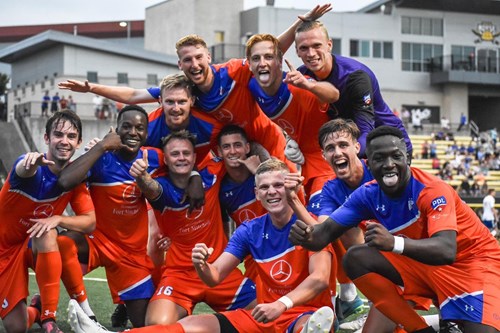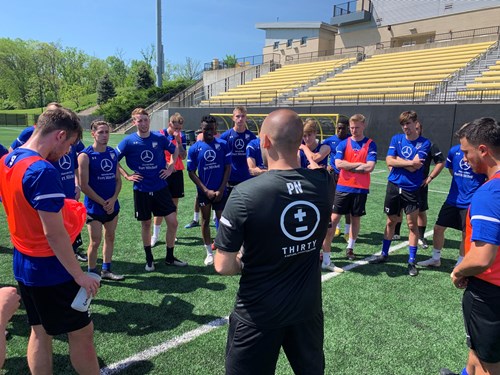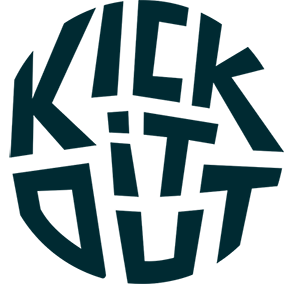Over the summer, UCFB students have been gaining valuable work experience at football clubs across the US as part of a multi-year partnership with the USL, working in a range of areas including marketing, media, coaching and events.
We spoke with Ethan James, a BA (Hons) Multimedia Sports Journalism student at UCFB Etihad Campus, about the highlights from his time at Cincinnati Dutch Lions FC where he worked for three months as a media intern…
Tell us about your role at Cincinnati Dutch Lions. What were your responsibilities and day to day routine?
So, we all lived in the same accommodation together – like Piccadilly Point but with footballers. We’d set off in the van at 9am to arrive at training half-an-hour later. I’d then have a chat with the coaches, see what the plans are, then set up the camera and tripod to record the session – the head coach, Paul Nicholson, sometimes liked to watch sessions back. During training, I tended to do a lot of Instagram and take photos – it was always a good way of keeping the content rolling in-between matchdays. It was also a thing which the players enjoyed too – so you’d always get in trouble if you missed ‘that unbelievable strike’, or ‘the incredible save’.

After first-team training, the coaches always let me join in the second team sessions from Tuesday to Thursday. I was always much worse than the other players, but I’ll always be remembered for that historic 11-aside practise match where I scored twice in a 2-0 win.
The rest of the day would be spent at the office editing videos, making graphics and all the other media jobs need doing. I always had support with this, my friends Jordi and Jesse played in the first team but were also keen to play a part with the media, and we had great fun doing it. Paul – a fellow Brit – would always be on hand to ask me to make everyone a cup of tea in-between all of this. And of course, we’d always find a break to play a game of ‘two-touch’ or one-touch passing.
Tell us about Cincinnati Dutch Lions’ season. How has it gone and how has the club developed/grown over the season?
From the football side, promisingly, but we didn’t achieve as much as we’d hoped for. We finished third in the league; one place adrift of securing play-offs. It was a shame, really. We pushed all season until the final match where we drew 2-2 with bottom of the league and winless West Virginia. Had we edged the game 3-2 – after hitting the woodwork three times – it would’ve seen us progress on ‘Goals For’. That’s how close we were.
Our final home match saw us dominate Flint City Bucks – the would-be National Champions – winning 3-1 in our final home game, so we definitely had the quality to go all the way. But a big part aside from talent, which we had in abundance, was the mentality. We weren’t quite strong enough to get ourselves over the line – but that’s football.

We also did a lot of good things with our media this year. We increased the number of followers on all social media platforms quite significantly, including a 221% increase (over 12,000 overall viewers) from last season of the people watching our home matches on Facebook Live. Numbers such as this – I’d like to think – are partly responsible for the 28% attendance increase from last season, averaging 63 more fans per game this year. This included a ‘franchise record’ of 417 fans in our final home game of the season against Flint City Bucks.
What were the highlights and most memorable things about the placement for you?
We did a lot of community work which I’m proud of – it was always more than just a ‘media internship’. We worked with the likes of Refugee Connect, St. Pius X, Boone County Library, Scott Christian Memorial Golf Scramble, Cincinnati Soccer League’s adult training sessions and more. It allowed us to meet and help some brilliant people and make a positive impact in Cincinnati and Northern Kentucky.
Volunteering with Refugee Connect to help run the World Refugee Day Cup – a soccer tournament in Cincinnati – was the most memorable though. There were probably over 600 refugees who took part from all over the world, and this diversity was celebrated through an incredible flag parade. The whole thing was quite emotional, really. I’ll send you the video I made to capture the event.
What skills have you been able to develop and enhance in the role?
Photoshop and graphic design. I’ve always been hopeless at graphic design – I used to hate it at school! But now I’ve been able to practise the skill in an environment which allows me to create what I want; I’ve been able to create some quite cool things and I’ve enjoyed doing it.
I’ve also improved my video editing and interviewing skills. With regards to video editing, it was cool to combine the graphic designs with my video edits, such as the ‘All the 2019 Home Goals’ video. We also conducted interviews before and after every match. It was interesting to see how each piece changed as the contexts and emotions also changed across the weeks of the campaign.
How do you think the role can benefit your future career? Has it been valuable for networking and building contacts for example?
Well, for starters, it’s opened up my mind to the possibility of working abroad. The idea of going to America by myself had never come across my mind – until this opportunity. I’m a quite an anxious person, and to be honest, when I found out I got the placement, my first thoughts were ‘how on earth am I going to independently fly across the world to a place I’ve never been?’. I hate flying. Hate it. But I’ve done it now, and I know I can do it again.
I’d love to do it again because I’ve met some brilliant people. If the opportunity ever comes up to go back, I’d snatch your hands off. Working with the General Manager, Brandon Ponchak, and Paul every day was a privilege, and they gave me some great advice. The opportunities to do all those community events, which I previously mentioned, were all down to Ponchak’s want to make soccer have a positive impact on the people around us. Soccer may not be the most popular sport in the States, but I think we connected a lot of people through it.
What do you make of the partnership between UCFB and the USL? How is it unique and special, and what does it offer to students?
Well, it’s the best thing I’ve ever done. It’s a fantastic relationship for the university to have. For me, it’s offered an experience I never thought I’d do. The chance to work in America is something in itself to get excited by. I’ve been given the freedom to experiment with my own ideas and share content with an audience interested in CDLFC. It’s helped me grow, and it’s also opened my mind more to what I want to do in the future. Video editing, graphic design, commentary, live-tweeting, are all skills I’ve developed and would love to do professionally.
How is soccer developing and growing in the US? Can it ever compete with the well-established traditional sports like NFL, basketball and baseball?
The honest answer is there’s a long way to go. I could go on for ages, really, but one major problem is that relegation-promotion isn’t a thing. And that really is a BIG problem. Without it, clubs who aspire to grow can only do so much in the division they’re locked in. So, if you look at the MLS, the majority owner who owns a minimum 35% of the entity must be worth at least $40m. But that’s just the regulations set by the USSF, so technically the MLS can reject anyone if they don’t meet the qualifications that they impose on themselves. And the fee to join the MLS is over US$150 million, so many clubs just can’t afford to compete in the top division.
But, having said that, the attendances and atmosphere at FC Cincinnati games are fantastic – even though they’re hopelessly languishing towards the bottom of the table. They get around 30,000 through the doors to every home game, and there are plans to make an even bigger stadium. So that’s very exciting for the city.

















